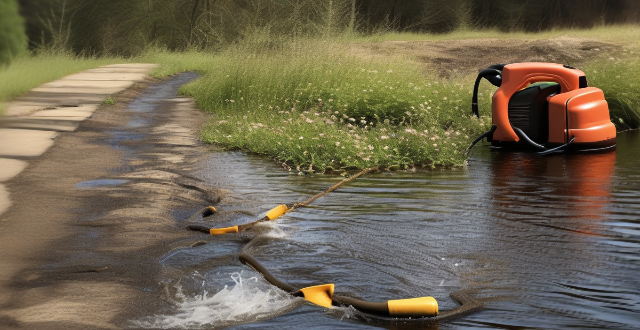Use Knife

How do I properly use a chef's knife in the kitchen ?
Using a chef's knife properly is essential for efficient and safe food preparation. Here are some tips on how to use a chef's knife correctly: Holding the Knife Correctly: Hold the handle firmly with your dominant hand, using a grip that feels comfortable and secure. Place your index finger and thumb on either side of the handle, with your other fingers curled around it. Keep your thumb tucked in towards the handle to avoid accidents. Chopping Technique: Maintain a slight angle (about 20 degrees) between the blade and the cutting board to make it easier to slice through tough ingredients. Use a rocking motion, pressing down on the blade at the end closest to the tip and then lifting at the handle end, to create a smooth chopping action. Slicing Technique: Start by drawing the blade back slightly before making the cut. As you push down on the blade, pull it towards you to make a long, even slice. Safety Tips: Sharpen your knife regularly as a sharp knife is safer than a dull one. Always keep your fingers out of the path of the blade to avoid accidents. Use a stable cutting board to protect your countertops and provide a safe surface for cutting. By following these guidelines, you can effectively and safely use a chef's knife in the kitchen. Remember to practice regularly to improve your skills and confidence with this versatile tool.

What are some time-saving tips for chopping vegetables quickly and efficiently ?
Chopping vegetables can be a time-consuming task, but with these tips, you can save time and make the process more efficient. Let's dive into some helpful techniques: Use a Sharp Knife: Maintain Your Knives by regularly using a honing steel or getting them professionally sharpened. Use the right knife for the job. For example, use a chef's knife for larger vegetables and a paring knife for smaller ones. Peel Smart: Not All Vegetables Need Peeling. Some vegetables, like carrots and potatoes, have edible skins that add nutrients and flavor. Only peel if necessary. Use a vegetable peeler for quick and even peeling, or for soft-skinned vegetables like tomatoes, a simple scoring and peeling method can be faster. Cut Once, Use Multiple Times: Prep Ahead of Time when you have time, prep extra vegetables and store them in airtight containers for future use. When cooking multiple dishes that use the same vegetable, chop all at once and divide as needed. Uniform Size Matters: Aim for uniform cuts so that vegetables cook evenly and look neat when plated. Take time to practice precise cutting; it will speed up your chopping in the long run. Use a Food Chopper or Mandoline: For large quantities, an electric food chopper can save significant time. A mandoline slicer quickly produces uniform slices or juliennes, especially useful for vegetables like cucumbers or potatoes. Clean As You Go: Keep your workspace tidy by cleaning your cutting board and utensils as you go to avoid clutter that can slow you down. Have a designated area for scraps and waste to keep your chopping area clear. Learn to Chop Properly: Watch tutorials or take a cooking class to learn proper chopping techniques, which can significantly improve speed and safety. Make sure you're holding your knife correctly; grip the handle towards the base for more control and force. Multitask with Safety: While it's good to multitask (like starting to boil water while chopping), ensure that you are not compromising safety by rushing or being distracted. Prepare other ingredients that don't require heat while vegetables are roasting or simmering. Work with Wet Knives: Keeping your knife wet with water can help slice through sticky or wet foods like fresh fruits more easily. If you need thin, uniform slices, dip your ruler in water before using it to measure thickness while slicing. Invest in Quality Tools: Invest in non-slip, durable cutting boards that are gentle on your knives. Consider investing in other kitchen tools like a garlic press, herb stripper, or apple slicer to speed up specific tasks.

How do I make sushi at home ?
Sushi is a popular Japanese dish that has gained worldwide popularity for its delicious taste and health benefits. Making sushi at home can be a fun and rewarding experience. Here are the steps to follow: Ingredients: - Sushi rice - Nori sheets - Fish fillets (salmon, tuna, or any other fish of your choice) - Vegetables (cucumber, avocado, carrots) - Soy sauce - Wasabi - Pickled ginger Tools: - Bamboo sushi mat - Rice cooker or pot - Sharp knife Steps: 1. Cook the sushi rice by rinsing it in cold water until the water runs clear, then cooking it with water in a pot until all the water has been absorbed. Mix the cooked rice with sushi vinegar using a wooden spoon. 2. Prepare the fish and vegetables by cutting them into thin slices and long, thin strips respectively. 3. Assemble the sushi rolls by placing a sheet of nori on top of the bamboo sushi mat, spreading a small handful of sushi rice evenly over the nori sheet leaving about an inch gap at the top, arranging the fish and vegetable slices on top of the rice, and rolling the sushi tightly using the bamboo mat. Wet the gap at the top of the nori sheet with water to seal the roll. 4. Cut the sushi rolls into bite-sized pieces using a sharp knife, wiping the knife with a damp cloth between each cut to prevent sticking. 5. Serve the sushi by arranging the pieces on a plate and serving with soy sauce, wasabi, and pickled ginger. Enjoy your homemade sushi!

How often should I use a language learning app to see significant improvement ?
To see significant improvement with a language learning app, it's recommended to use the app daily for at least 10-15 minutes, setting weekly targets and focusing on consistency over intensity. Combining app use with real-world interactions and adjusting your routine based on progress tracking are also key strategies.

Is there a difference between PPE for medical use versus industrial use ?
The text discusses the differences between personal protective equipment (PPE) for medical use and industrial use. It explains that these differences mainly concern the level of protection required, the type of hazards encountered, and the specific features of the equipment designed to address those hazards. Medical professionals often deal with infectious diseases and thus require PPE that can protect them from pathogens like viruses and bacteria. This typically involves higher levels of protection, such as respiratory protection with N95 respirators or equivalent, which filter out airborne particles, and blood-borne pathogen protection with gloves, gowns, and face shields or goggles to prevent contact with blood and bodily fluids. Industrial workers face different types of hazards, including chemical exposure, physical injuries, and environmental factors. Their PPE tends to focus on chemical protection with protective suits, gloves, and boots made from materials resistant to specific chemicals or solvents, and physical protection with hard hats, safety glasses, and high-visibility clothing to prevent injuries from machinery or construction sites. The primary hazard in a medical setting is biological agents, such as viruses, bacteria, and other pathogens that may be present in patients' blood or other bodily fluids. Workers in industrial settings face a variety of hazards, including but not limited to chemical exposure from handling toxic substances, physical dangers from heavy machinery and equipment operation, and environmental risks such as extreme temperatures or noise pollution. PPE for medical use often includes features like fluid resistance with materials that are impermeable to liquids to prevent contamination, antimicrobial treatment with some PPE items having an antimicrobial coating to reduce the growth of microorganisms, and compatibility with other medical equipment designed to be used in conjunction with other medical tools and devices without interference. PPE for industrial use emphasizes features like durability with materials that can withstand harsh conditions and repeated use, comfort and mobility often lighter and more flexible materials to allow for ease of movement over long periods, and specialized functionality such as gloves having enhanced grip or shoes having steel toes for added protection against physical impacts.

How can I repair a hole in the wall without professional help ?
Repairing a hole in the wall can be done without professional help with the right tools and techniques. This step-by-step guide includes materials needed, cleaning and prepping the area, applying spackling paste, sanding the area, applying primer, painting the area, removing tape and cleaning up. Following these simple steps will result in a successfully repaired hole in the wall.

Can I use multiple coupon codes on a single transaction ?
The ability to use multiple coupon codes on a single transaction varies by retailer. Some, like Amazon and Target, allow it while others, such as Best Buy and Macy's, do not. To maximize savings, shoppers should read coupon terms carefully, stack coupons when allowed, use them wisely, sign up for newsletters, and follow retailers on social media for exclusive offers.

Is it necessary to use props while practicing yoga poses ?
Props can be beneficial for alignment, modification, deepening practice, and comfort in yoga. However, they should be used wisely to avoid over-reliance or incorrect use. Individual needs and preferences also play a role in deciding whether to use props while practicing yoga poses.

What tools do I need for basic home repairs ?
Basic Home Repairs Toolkit: Essential Tools for Common Household Tasks When it comes to basic home repairs, having the right tools is essential. Here are some of the most important tools you should have on hand for common household tasks: 1. Screwdrivers: Flathead and Phillips head screwdrivers for general use and assembling furniture. 2. Pliers: Needle-nose and slip-joint pliers for gripping and bending wires and cutting and gripping various materials. 3. Wrenches: Adjustable wrench and crescent wrench set for tightening and loosening nuts and bolts of various sizes. 4. Hammer: Claw hammer for driving nails and removing them from wood. 5. Tape Measure: Retractable tape measure for measuring distances and ensuring accuracy in cuts and installations. 6. Level: Torpedo level and carpenter's square for checking if objects are horizontally level and angles are square and true. 7. Handsaw: Hacksaw and keyhole saw for cutting through metal, plastic, or wood and making small, precise cuts in drywall or wood. 8. Drill/Driver: Cordless drill/driver with assorted drill bits and screw tips for drilling holes and driving screws into various materials. 9. Staple Gun: Manual staple gun for upholstery, fabric, and light duty fastening tasks, and electric staple gun for heavy-duty fastening tasks like installing flooring or ceiling tiles. 10. Utility Knife: Retractable utility knife for cutting open boxes, trimming materials, or scoring surfaces before snapping them apart. By having these basic tools on hand, you can tackle many common home repair projects with confidence and efficiency. Remember to keep your tools organized, clean, and properly maintained for safe and effective use.

Are lithium batteries safe to use ?
Lithium batteries have become an integral part of modern technology, powering a wide range of devices from smartphones to electric vehicles. However, concerns about their safety have been raised due to incidents of overheating and fires. In this article, we will explore the safety aspects of lithium batteries and provide guidance on how to use them safely. One of the main safety concerns with lithium batteries is the risk of overheating and catching fire. This can occur if the battery is damaged, improperly charged, or exposed to extreme temperatures. When a lithium battery overheats, it can cause a chemical reaction that leads to thermal runaway, which is a self-sustaining process that can result in a fire or explosion. Another safety concern associated with lithium batteries is the potential for chemical hazards. The chemicals used in lithium batteries can be toxic and harmful to human health if they are ingested, inhaled, or come into contact with skin or eyes. It is important to handle these batteries with care and dispose of them properly to avoid any potential risks. To minimize the risks associated with lithium batteries, it is essential to follow some basic safety tips: 1. Use genuine products from reputable manufacturers to ensure that the battery meets safety standards. 2. Avoid overcharging by not leaving your device charging unattended and avoiding using cheap chargers that may overcharge the battery. 3. Store your lithium batteries in a cool, dry place away from direct sunlight and extreme temperatures. 4. Inspect your batteries regularly for any signs of damage or swelling, and replace them if necessary. 5. Dispose of your old lithium batteries properly by taking them to a recycling center or following the manufacturer's instructions. 6. Follow the manufacturer's guidelines for your specific device and battery. 7. Keep lithium batteries out of reach of children as they may pose a choking hazard. 8. Use protective cases or covers for your devices to prevent damage to the battery. 9. Avoid dropping or mishandling your device as this can damage the battery and increase the risk of overheating. 10. Seek professional help if you notice any issues with your battery, such as swelling or leakage. In conclusion, while there are some safety concerns associated with lithium batteries, following these safety tips can help reduce the risks and ensure that you use them safely. By being cautious and responsible, you can enjoy the benefits of these powerful batteries without compromising your safety.

Can you teach me how to decorate a cake like a professional ?
Decorating a cake like a professional requires creativity, skill, and attention to detail. Here are steps and tips to create a stunning cake that looks like it came from a bakery: - Materials needed include a freshly baked and cooled cake, buttercream frosting, piping bags and tips, spatula or offset knife, turntable (optional), and edible decorations. - Level the cake by using a serrated knife to create a flat surface for stacking and decorating. - Apply a thin layer of buttercream frosting over the entire cake to seal in crumbs and create a smooth base for additional layers of frosting. Chill the cake for about 30 minutes to set the crumb coat. - Once the crumb coat is set, apply a thicker layer of buttercream frosting all over the cake, achieving a smooth finish using an offset spatula or bench scraper. If desired, use a turntable for easier maneuvering. - Mix food coloring into your buttercream frosting to achieve your desired shade(s). You can also add flavor extracts such as vanilla, almond, or lemon to enhance the taste of your frosting. - Fit piping bags with different tips (star, round, petal, etc.) and fill them with colored buttercream frosting. Practice making swirls and patterns on parchment paper before applying them to the cake. Start from the center and work your way outward using even pressure and consistent motions. - Incorporate edible decorations such as fresh fruit slices, chopped nuts, chocolate shavings, or other edible decorations on top of the cake and around the sides. Use small dabs of frosting to secure larger items in place. - Add borders and details using smaller piping tips around the edges of the cake or within specific areas to define different sections and add visual interest. - Finally, add any remaining finishing touches such as writing messages with piping gel or adding sugar pearls as accents. Step back and admire your beautiful creation!

How do I use Apple Pay in stores ?
Apple Pay is a convenient and secure way to make purchases using your Apple device. Here's how you can use it in stores: 1. Set up Apple Pay on your device by opening the Wallet app, tapping the plus sign, and following the prompts to add a new card. 2. Use Apple Pay at the checkout by double-clicking the side button on your iPhone, holding it near the contactless reader until you see Done and a checkmark, and entering your PIN or signing your name if prompted. 3. Confirm your payment by looking for a confirmation on your device. 4. Keep your receipt in case you need to return or exchange an item.

How do I properly use and maintain electrical equipment ?
Electrical equipment requires proper use and maintenance to ensure safety, efficiency, and longevity. Key tips include reading the manual, inspecting before use, avoiding overloading, keeping away from water, cleaning regularly, checking wiring, replacing parts as needed, storing properly, unplugging when not in use, using surge protectors, and avoiding DIY repairs for significant issues. Following these guidelines helps extend the lifespan of electrical equipment and minimizes risks associated with their use.

Is it ethical to use genetically modified organisms (GMOs) in agriculture ?
The use of genetically modified organisms (GMOs) in agriculture is a complex and contentious issue that raises ethical questions. Proponents argue that GMOs offer benefits such as increased crop yields, reduced pesticide use, improved nutrient content, and environmental sustainability. Opponents raise concerns about human health risks, economic concentration, environmental impact, and ethical considerations. Key ethical considerations include scientific evidence, public perception, equity and access, environmental stewardship, ethical principles, regulatory oversight, long-term monitoring, global collaboration, innovation and alternatives, and education and awareness.

What is the easiest way to patch a small hole in the ceiling ?
Patching a small hole in the ceiling is a straightforward DIY project that requires basic tools and materials. To begin, clean the area around the hole with a damp cloth to ensure proper adhesion of the spackling compound. Apply a small amount of spackling compound to the hole using a putty knife or spatula, spreading it evenly over the hole and slightly beyond its edges. Allow the compound to dry completely according to the manufacturer's instructions, then sand the area until it is level with the surrounding ceiling surface. Apply a coat of primer paint to the patched area, followed by a coat of ceiling paint that matches your existing ceiling color. Work in a well-ventilated area, use a ladder or step stool for safety, and consider hiring a professional if you are unsure about your ability to repair the hole.

Are fast charging car chargers safe to use ?
Fast charging car chargers have raised safety concerns due to risks such as overheating, battery degradation, and electrical hazards. To ensure safe use, it is recommended to use approved chargers, follow manufacturer's guidelines, monitor charging temperatures, avoid overcharging, inspect wiring and connections, use a surge protector, and store the charger properly. By following these tips, the risks associated with fast charging can be minimized.

What are some common ways that companies collect and use personal data ?
Companies employ various direct and indirect methods to collect personal data, which they then use for marketing, product development, enhancing customer experiences, and ensuring security.

How can celebrities use their influence for social change ?
Celebrities have a unique opportunity to use their influence for social change. They can leverage their fame and platform to bring attention to important issues, inspire their fans to take action, and make a positive impact on the world. Celebrities can use their platform to raise awareness about important social issues, inspire their fans to take action by sharing their own experiences and stories related to social issues, partner with organizations that are working towards social change, use their talents and skills to support social change initiatives, and advocate for policy changes at the local, national, or international level. By doing so, celebrities can help shape laws and regulations that promote social justice and equality.

What are the essential kitchen tools every home cook should have ?
The text provides a list of essential kitchen tools that every home cook should have, including a chef's knife, cutting board, measuring cups and spoons, mixing bowls, saucepan, skillet/frying pan, baking sheet/roasting pan, whisk, wooden spoon or spatula, can opener, garlic press, grater, peeler, tongs, and colander/strainer. These tools are important for preparing meals and ensuring accurate measurements and successful cooking.

How do data protection regulations impact the use of cookies on websites ?
Data protection regulations have significant impacts on the use of cookies on websites. Website owners must comply with strict rules regarding explicit consent from users, transparency and disclosure of cookie use, minimization of data collection, data security, and avoidance of penalties for non-compliance. By doing so, they can protect user privacy and build trust while still providing an optimal user experience through the use of cookies.

How do companies collect and use my personal data online ?
Companies collect and use personal data online for various purposes, including marketing, advertising, customer service, and improving their products or services. They do this through cookies and tracking technologies, social media platforms, email marketing, and customer service interactions. By analyzing this data, companies can gain insights into user behavior and preferences, which they can use to improve their products or services and target users with personalized advertising.

Can I use Apple Pay to send money to friends or family ?
The article provides a summary of how to use Apple Pay to send money to friends or family through the Apple Cash feature. It outlines the steps to set up Apple Cash, send money using Apple Pay, and receive money through Apple Pay. Additionally, it mentions other ways to use Apple Pay for transactions such as making purchases, paying for services, splitting bills, and donating to charities.

How do I use chopsticks properly when eating Japanese food ?
Using chopsticks is an art form in Japan, and there are certain etiquette rules that you should follow to show respect for the culture. Here's a step-by-step guide on how to use chopsticks properly when eating Japanese food: 1. Holding the Chopsticks: Hold the first chopstick (the one closer to the tip of the food) like a pencil, resting it between your thumb and index finger. This is your stationary chopstick. Place the second chopstick (the one closer to the end of the food) underneath the first chopstick, resting on your ring finger. This is your moving chopstick. 2. Picking Up Food: Use the tips of the chopsticks to scoop up food rather than pincing it with the ends. This is considered more polite and traditional. For larger pieces of food, it's acceptable to use both chopsticks to pick them up. For smaller items, try using just one chopstick if possible. 3. Eating: If you need to dip your food in soy sauce or another sauce, do so lightly and minimally. Overdoing it can be seen as wasteful. Place the food in your mouth from the chopsticks without making any noise. Chew with your mouth closed. 4. Chopstick Etiquette: Avoid playing with your chopsticks, tapping them on the table, or leaving them standing in your food. These actions are considered impolite. Never use your chopsticks to point at people or gesture with them. This is rude and associated with funeral rites in Japan. Do not lay your chopsticks across your plate or bowl as this resembles incense sticks at a funeral. Instead, rest them on the chopstick rest provided or on the edge of your dish. 5. After Eating: It's common to wipe the ends of the chopsticks before and after use with the small towel or oshibori provided. If you're at a restaurant, leave the chopsticks as they are when you finish eating. Do not put them back in their original packaging or wrap them up. By following these guidelines, you'll not only avoid offending anyone but also show that you respect and appreciate Japanese dining culture. Remember, practice makes perfect!

How can I use social media to drive traffic to my website ?
Social media is a powerful tool that can be used to drive traffic to your website. Here are some tips on how to use social media effectively: create quality content, share your content on social media, engage with your audience, use paid advertising, and collaborate with influencers. By following these tips, you can increase your website's visibility and attract more visitors.

Can I use any USB car charger for my iPhone ?
The iPhone requires a specific amount of power to charge effectively and safely. If the charger does not provide the correct amount of power, it can damage the phone or cause it to charge very slowly. Most USB car chargers come with a standard USB port, but Apple devices use a different type of connector - the Lightning connector. Some cheaper models may not have the necessary safety features to protect your device from power surges or may not work reliably in all conditions. Examples of suitable car chargers include the Apple USB Car Charger, Anker PowerDrive II Car Charger, and Belkin Car Power Valet. Always use a charger that is specifically designed for your device.